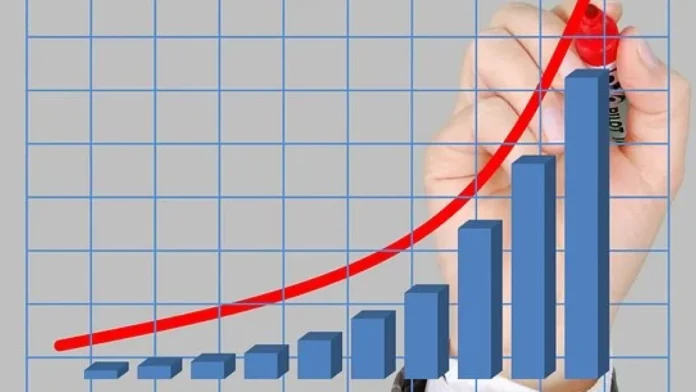The inflation rate in the United States increased to 7.5% in 40 years, from 5% in 1980, according to a recent economic report by the Federal Reserve. The Fed expects inflation to be around 3% and 2.5% respectively for this year and next year, with prices rising by 2.1%.
The Consumer Price Index (CPI) measures the change in prices of goods and services purchased by households. As such, it is a useful tool for measuring inflation. This article examines the history of US inflation and how it has changed over a span of 40 years. The author evaluates the various effects that have contributed to changes in the CPI, including changing income levels, wages, and prices on goods.
The History of Inflation
Inflation in the United States has been on the rise in recent years, growing from an annual rate of around 2% in 2015 to a rate of nearly 3.5% in 2019. This inflationary trend appears to be continuing into 2020, with the Consumer Price Index (CPI) rising by 0.4% in January of this year.
There are a number of factors that have contributed to this inflationary trend, including the increasing cost of health care, housing, and education. Additionally, the ongoing trade tensions between the US and China have resulted in higher prices for a range of imported goods.
Looking ahead, it is difficult to say how high inflation will go in the coming months and years. However, if current trends continue, it is likely that inflation will remain near its current levels or even increase further. This could have a number of implications for the US economy, including higher interest rates and reduced purchasing power for consumers.
What is Inflation?
Inflation is the rate at which the prices of goods and services rise over time. The main driver of inflation is the law of supply and demand: when there is more demand for goods and services than there is available supply, prices go up. In the United States, inflation has been relatively low in recent years, but it spiked in 2020 due to the coronavirus pandemic.
Inflation can have both positive and negative effects on an economy. When inflation is low, consumers have more purchasing power and can buy more goods and services. This can lead to economic growth as businesses see increased demand for their products. On the other hand, when inflation is high, it can erode purchasing power and lead to higher costs of living. This can cause economic stagnation or even recession.
The Federal Reserve strives to keep inflation in check by setting interest rates and using other monetary policy tools. If inflation gets too high, the Fed may raise rates to cool down the economy. Conversely, if inflation is too low, the Fed may lower rates to stimulate economic activity.
Types of Inflation
Inflation is a broad economic concept that describes the increase in the price of goods and services over time. There are many different types of inflation, each with its own causes and effects.
The most common type of inflation is consumer price inflation, which occurs when the prices of goods and services increase. This can be caused by a variety of factors, including supply and demand imbalances, increases in production costs, or currency devaluation. Consumer price inflation can have a variety of effects on the economy, including higher prices for goods and services, lower wages in real terms, and reduced purchasing power.
Another type of inflation is asset price inflation, which occurs when the prices of assets such as stocks, bonds, and real estate increase. This can be caused by increases in demand for these assets or by decreases in the supply of these assets. Asset price inflation can lead to increased inequality as those who own assets see their wealth grow while those who do not see their purchasing power decline.
A third type of inflation is wholesale price inflation, which occurs when the prices of goods at the wholesale level increase. This can be caused by increases in production costs or by reductions in the supply of these goods. Wholesale price inflation often leads to consumer price inflation as businesses pass on their higher costs to consumers.
Finally, there is hyperinflation, which is a very high rate of consumer price inflation. Hyperinflation can be caused by a variety of factors, including government
Factors That Affect Inflation
Inflation is a key element in the economic health of any nation. It can have both positive and negative effects on different segments of the population. The most important factor that determines the rate of inflation is the supply and demand for goods and services in an economy. When there is more money available to spend than there are goods and services available, prices go up. This increase in prices is called inflation.
Other factors that affect inflation include:
- The amount of money in circulation: If there is more money available to spend, this will put upward pressure on prices.
- The level of economic activity: When there is more economic activity, businesses are able to sell more goods and services, which can lead to higher prices.
- The cost of inputs: If the cost of inputs such as raw materials or labour goes up, businesses will pass on these increases to consumers in the form of higher prices.
- Government policies: Government policies such as taxes or subsidies can affect inflation by changing the amount of money that people have available to spend.
Determining the True Value of a Product
In order to determine the true value of a product, one must first consider the cost of living in the country where the product is being purchased. The cost of living can be measured by the Consumer Price Index (CPI), which is a basket of goods that are representative of what a typical consumer would purchase. The CPI is then compared to a base year, with the current year’s CPI being used to determine the percentage change in prices.
The CPI can vary depending on which country you are in and what items are included in the basket of goods. For example, in the United States, the CPI includes items such as food, housing, transportation, and medical care. In Rajkot, India, the CPI includes items such as rice, wheat, vegetables, fruits, milk, eggs, chicken, fish, petrol, and kerosene.
The CPI can also vary depending on how it is calculated. The most common method used to calculate the CPI is the Laspeyres index, which weights each item in the basket of goods according to its importance in the base year. However, there are other methods used to calculate the CPI, such as the Paasche index and Fisher index.
Once you have considered all of these factors and have decided on a method for calculating the CPI, you can then use this number to determine the true value of a product.
How to Combat Inflation
Inflation has been a problem in the United States for many years. The cost of living has risen steadily, while wages have not kept pace. This has led to a decline in purchasing power and standard of living for many Americans.
There are a number of ways to combat inflation. One is to invest in assets that will hold their value or increase in value over time. This can include things like gold, silver, real estate, and other investments that are not subject to the same economic forces as stocks and bonds.
Another way to combat inflation is to make sure you are diversified in your investment portfolio. This means having a mix of investments that will perform differently in different economic conditions. For example, if you have investments that do well when interest rates are rising, they will help offset losses from investments that do poorly in this environment.
Finally, it is important to stay disciplined with your spending. When prices start to rise, it can be tempting to spend more money than you can afford. However, this will only make the problem worse in the long run. By being mindful of your spending and sticking to a budget, you can help keep yourself on track during periods of inflation.
Conclusion
With inflation rates rising in the US, it’s important to keep an eye on your finances and make sure you’re prepared. Fortunately, there are plenty of ways to combat inflation and keep your money safe. Rajkotupdates.news offers some great tips on how to do just that, so be sure to check them out. And remember, no matter what happens with the economy, always stay informed and take care of your money — it’s the best way to protect yourself in times of trouble.



